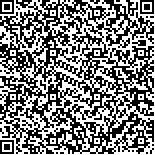下载中心
优秀审稿专家
优秀论文
相关链接
摘要

高光谱图像噪声评估既是评价图像质量的重要内容,也是衡量传感器性能的重要指标。一般噪声评估方法通过对图像规则分割或利用某种距离准则对图像进行连续性分割,计算图像子块的局部标准差或多元线性回归的残差来实现对图像噪声的估计。但这些方法获取的图像子块并不是完全均匀的,图像子块中仍然会存在地物边界,导致图像噪声评估的结果不准确。为了有效提取图像中的均匀子块,本文提出了一种优化的空间光谱维去相关(OSSDC)方法,基于光谱角距离和欧氏距离双重判定,从光谱曲线的形状和数值上寻找相似像元,获取图像中的均匀子块,然后利用多元线性回归计算残差实现对图像噪声的估算。利用模拟图像和实际航空飞行实验获取的高光谱图像对优化算法进行检验,同时与几种常用噪声评估方法进行对比分析,结果表明优化后的算法计算结果更准确,稳定性和适用性优于其他方法。
Noise estimation of hyperspectral images (HSIs) is not only a crucial part of image quality evaluation but is also an important index of sensor performance. Spatial and spectral decorrelation method is a widely used approach for estimating noise in HSIs. This method is based on the high correlation of HSIs in space and spectrum, and a pixel can be predicted well using its spatial and spectral neighbors. Any prediction error can be considered noise. A series of noise estimation algorithms, such as Spatial and Spectral Decorrelation (SSDC), Residual-scaled Local Standard Deviation (RLSD), and Homogeneous Region Division and Spectral Decorrelation (HRDSDC), have been developed on this basis.The images are divided by rule or by some distances between spectrums in the general noise estimated methods. The local standard deviations or the residuals of multiple linear regression of imaging blocks are calculated as the image noise estimation. However, the sub-blocks of the images acquired by these methods are not completely uniform, and the edges of objects are still retained, thereby resulting in inaccurate outcomes of the image noise estimation. To obtain the uniform imaging blocks in the image effectively, an optimized SSDC method for estimating noise in HSIs has been used. The spectral angle and Euclidean distance are used to obtain the uniform imaging blocks, and the residuals of the heterogeneous blocks are calculated by multiple linear regression as the estimation of image noise. The optimized method is validated with simulated and radiance images acquired in the same aerial experiment and is compared with several useful noise estimation methods (e.g., LMLSD, RLSD, SSDC, and HRDSDC). The LMLSD method, which is based on spatial dimension, is susceptible to image texture features and is only suitable for images with relatively uniform landcover. The RLSD method has better noise estimation results than LMLSD.However, the uncertainty of the results is large and cannot indicate the noise level of images accurately. The three methods, namely, SSDC, HRDSDC and OSSDC, are all based on the spatial and spectral dimensions, have high stability, and can be applied to various images. The results of HRDSDC are significantly better than those of SSDC, and the OSSDC method exhibits better performance than HRDSDC. The OSSDC method uses the spectral angle and the Euclidean distance to determine the heterogeneous blocks, which reduce the influence of the edge of objects and the texture features. The results of image noise estimation are also accurate. In the validation, the optimized method shows distinctly enhanced robustness compared with the common methods. The estimation of the noise is also proved to be accurate. In addition, the effect of texture features on noise estimation is discussed in this paper. Results show that larger noise estimation results yield complex texture features.

